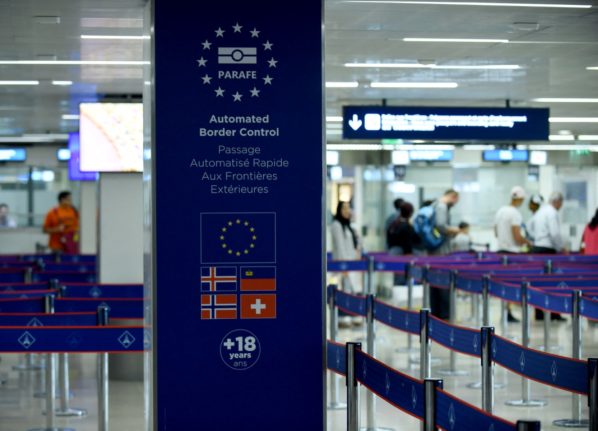At the moment, Sweden has entry bans in place that affect most non-EU countries. This means that if you are travelling to Sweden from a non-EU country that’s not on the short list of exempted countries, you need to fall into a category that is exempt from the ban.
These categories include, among others, Swedish residents, EU citizens, and people travelling for essential work or urgent family reasons. You can find a full list on the Swedish Police Authority’s website. Exemptions do not extend to tourists nor in general to people travelling to visit friends or family (unless you can prove that there are specific urgent reasons).
So if you want to travel from for example the UK, US or India to visit, say, friends or your adult children in Sweden, you cannot enter Sweden directly, and that entry ban is in place until at least October 31st. At the time of writing, that’s irrespective of your vaccination status, so having had both jabs makes no difference.
But there may be ways for you to get to Sweden if you need to.
Sweden’s entry ban is based on the country you travel from. This means that if you travel to Sweden via a country exempt from the ban (including all EU/EEA countries), you will be able to enter. This however of course also depends on the travel restrictions in that country.
Sweden currently requires people who enter from most countries, including from most EU countries (unless you have an EU Digital Covid Certificate that shows you are vaccinated or have recovered from Covid in the past six months), to present a negative Covid-19 test on the border (there are exemptions from this too), so if you travel to Sweden via one of these countries you need to be aware of that.
But if you travel via one of the Nordic countries – this includes Denmark, Norway, Finland and Iceland – it is possible to enter Sweden freely without even showing a negative test.
Travelling via Denmark is likely the easiest option, as Copenhagen Airport has a lot of international connections and it is relatively easy to travel onwards to Sweden by train or air. And if you’re travelling from a country such as the UK, you may be able to drive to Sweden.
Again, please note that this depends on the travel and testing rules in the countries you have to travel through in order to reach Sweden, and this article does not focus on those rules.
But take Denmark as an example. Denmark has dropped its most restrictive “red” travel classification for all countries, including all non-EU countries. And unlike Sweden, Denmark does differentiate between non-vaccinated and fully vaccinated non-EU travellers, so depending on where you’re travelling from, it is much easier for fully vaccinated people to get into Denmark. You can read more on the official Danish site or our sister site The Local Denmark.
In order to travel from Denmark to Sweden, there are currently no requirements in place either to show a negative Covid-19 test or to prove a worthy purpose of travel, regardless of your nationality or where you were prior to your stay (however brief) in Denmark.
Do keep up-to-date with coronavirus guidelines in Sweden as well as the countries you travel through. And another thing to note: There is no legally enforced quarantine in Sweden, but the Public Health Agency has issued recommendations regarding self-isolation and testing to people who have been to a country outside the Nordics in the past week and are not fully vaccinated. You can read more on its website.
Travellers should note that entry to Sweden is always at the discretion of the individual border officer, and entry rules may change at short notice. The Local cannot guarantee you will be granted permission to cross the border into Sweden. You are welcome to email our editorial team at [email protected] if you have questions, but please be aware that we cannot confirm that you will be able to travel to Sweden, and we may not be able to reply to every email.



 Please whitelist us to continue reading.
Please whitelist us to continue reading.
So you need to go from the UK, change flights in Denmark and fly to Sweden. Hmmm interesting
Your article states that it’s up to the border police to decide if you get in . How can Sweden refuse entry to people from the US if their own stated Covid policy says specifically that anyone can enter from Denmark regardless of nationality?
This article is just about tourist ( without a “worthy purpose” of travel), right? I would like to see the same subject for people who have a residence permit but are not yet in Sweden.
If you have a residence permit you are exempt from the ban. Check the police website.
Hej, can anyone advise me. You can enter Sweden from the UK if you have an ’urgent family matter.’ Can anyone confirm what constitutes as ’urgent’? We had a baby in April and are very ready for grandparents to visit but can’t find anywhere if this constitutes as urgent.
The article says “But there may be ways for you to get here if you need to, as Sweden’s travel ban is based on the country you travel from.”
Do you have a reliable source for this?
Thanks
I am a Uruguayan national and will be starting my studies in Copenhagen in September.
Currently i can only enter Spain within the EU. I had many people tell me that i can fly to Spain and then drive or take a bus to Copenhagen as there is border controls. Anybody knows if this is true?
Thanks!
as there is no border controls within the EU*
Has anyone flown from U.K. recently via Denmark?
I have parents who have changed flights twice now because of Sweden extending silly ban for U.K.
I live in Denmark. I have crossed both to and from Denmark more than once without anyone checking anything. Other times, I have been checked… more often on returning to Denmark. It appears to depend on the time of day. It seems that during certain hours, the checkpoints simply aren’t manned.
Of course, I will not publicly identify the locations or times of my crossings. I doubt that the above is true for all of them. The purpose of this comment is just to note that the authorities don’t consistently follow their own governments’ rules. It is not to suggest to others ways to evade those rules.
Would be interested to know the experience of any US citizen who has tried to enter Sweden after a connection in Iceland.
We did it! However; it is important to note that IcelandAir would not board us on September 16 in Newark, NJ with a round trip ticket to Stockholm with a connection in Iceland (Keflavik airport). Fortunately, we had time in Newark to buy a ticket just to Keflavik. Then at Keflavik, we went through passport control, claimed our bags, showed our test results and vaccination records, bought a ticket to Stockholm online, checked our bags, and boarded. The last minute tickets cost extra. We bought our round trip tickets to Stockholm after September 6, and IcelandAir should have informed us earlier if those tickets were invalid. The agents at the counter in Newark had a notice that said ARN is a “no-go” for Americans. They understood nothing about transit countries.
What about entry to Sweden from Germany? Is that as easy as entering from Denmark?